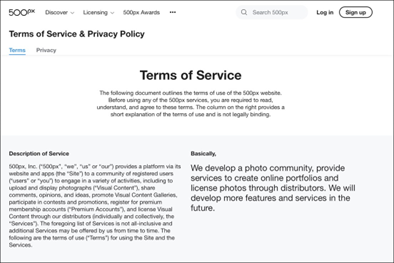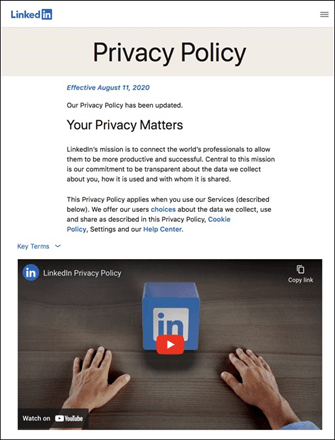If you were building a playground for your local elementary school, you’d never install swings with chains that pinch little fingers or a teeter-totter that catapults kindergarteners into the air. A dangerous playground guarantees that half the kids end up in the nurse’s office or an ambulance!
So why do companies make the customer experience so “dangerous” by publishing policies or Terms & Conditions that customers can’t easily understand? Presenting customers with difficult-to-comprehend policies is guaranteed to cause complaints to the contact center. If you want to increase contact volume, write the fine print in a legalistic, tedious, and hard-to-read style.
Understanding this policy is too much work
Here’s an example of a hard-to-understand airline policy. Let’s say you go on vacation and buy a small oil painting. Should you ship the painting home via FedEx or package it carefully and check it with your luggage on your return flight? Will ABC Airlines agree to handle your fragile painting carefully?
When you read this portion of the airline’s Contract of Carriage (their policy document), you struggle to understand whose responsibility ABC Airlines considers the safety of your painting, theirs or yours?
c) Fragile or Perishable Items Accepted Pursuant to Limited Liability Release
ABC Airlines is not liable for loss, damage, or delay in the delivery of a passenger’s baggage or other property accepted by ABC Airlines pursuant to the execution of a Limited Liability Release form executed by the passenger for the purpose of inducing ABC Airlines to carry the item, except as expressly provided by the Limited Liability Release.
So, is the airline liable for damage to your painting or not? Or they are liable “pursuant to the execution of a…Release form executed by the passenger”? So much “executing”! And do passengers “induce” the airline to carry items? I’m so confused.
Why do companies publish hard-to-understand policies?
Sounds crazy, right? Why would a company make important information—a policy—difficult to read? Well, there are lots of reasons:
- To prevent legal risk, companies publish the policy the way the Legal Department wrote it. While legalese may be defensible in a court of law, regular people can’t understand it.
- Companies intentionally make policy language unclear because they know customers hate the policy. In the ABC Airlines example above, I’m pretty sure the airline is saying it’s not liable for any damage to your baggage or property, which is a pretty one-sided policy.
- Companies bury the policy in a dark corner of their website. Instead of presenting it where customers learn and shop (on a product description or pricing page, for example), they hide their policies in the FAQs or on a separate Terms & Conditions page.
Four ways to present policies so customers can understand them<
-
- Present the legal verbiage and the plain language paraphrase side by side.
500px, which is “… the leading online network for photographers,” does the work to make its Terms of Service and Privacy Policy understandable. It presents these legal statements in a two-column format: the left column is the legally binding wording and the right column, labeled “Basically,” offers the plain language paraphrase. Having both the hard-to-read and easy-to-read versions side by side solves the problem for the photographers who join the 500px network and the company’s attorneys. And the “Basically,” column is sometimes a hoot to read. In the User Conduct section, here’s what the “Basically,” column says: You must follow our Content Guidelines and can’t use our site to post pornographic material, harass people, send spam, etc. Be reasonable and responsible, don’t do anything stupid, and you’ll be fine.

- Use a video explainer for a complicated policy.
You won’t be surprised to learn that LinkedIn’s Privacy Policy is long enough to have its own Table of Contents. To make the policy more accessible and understandable, LinkedIn offers a one-minute-plus video explainer that lists what’s covered in the policy, offers examples, and shows how to control what information people see and how it can be used. To be sure, LinkedIn’s Privacy Policy is easier to read than many. A lot of care has been taken to express complicated concepts clearly. The video explainer is another way to help people understand the policy concepts before they read the actual policy.

- Use a graphic to visually reinforce the policy.
Pro Sound Gear, “Miami’s #1 source for pro audio and DJ equipment,” publishes its Return Policy in the usual manner: detailed paragraphs, ample instructions, and a few “herebys,” “constitutes,” and “further reserves the rights.” But Pro Sound Gear also does something unusual and wonderful: at the top of the Return Policy page, it presents a large, bright graphic that explains the refund and exchange policies. Easy to see, simple to interpret, this graphic does a lot of work to make the policy instantly understandable.

- Publish the policy in the form of a comic book.
You say you want your customer to be able to understand your policies without undue effort. Are you as serious about understandable policies as the Financial Services Provider who hired Creative Contracts to create this comic book contract? The comic explains “…to the client what they are agreeing to when they sign the contract, what they can expect from their financial advisor as well as what their risk profile is.” And don’t worry about whether the comic book is legally binding. Creative Contracts is a consultancy led by an attorney. The company makes “contracts everyone can understand” so both parties can “have a successful relationship and reduce disputes,” two goals the contact center shares.

- Present the legal verbiage and the plain language paraphrase side by side.
The Contact Center doesn’t own responsibility for explaining policies
While frontline agents often find themselves interpreting, explaining, and enforcing company policies, these responsibilities are not theirs alone. Here are steps other teams should take to make policies easier to understand.
- Communication: Improve the web content that explains the policy.
- Legal: Approve the use of plain language to explain the policy.
- Web: Present and explain the policy better, more frequently, or at different points during the purchase process.
- Sales: Explain the policy honestly to prospects and customers.
- Marketing: Include mention of the policy in campaigns.
- Graphic Design: Include the policy in product packaging.
Don’t make the customer experience “dangerous” by publishing legalistic policies your customer can’t understand. Your customers—and your contact center—need fine print that doesn’t require a degree from Harvard Law.








0 Comments